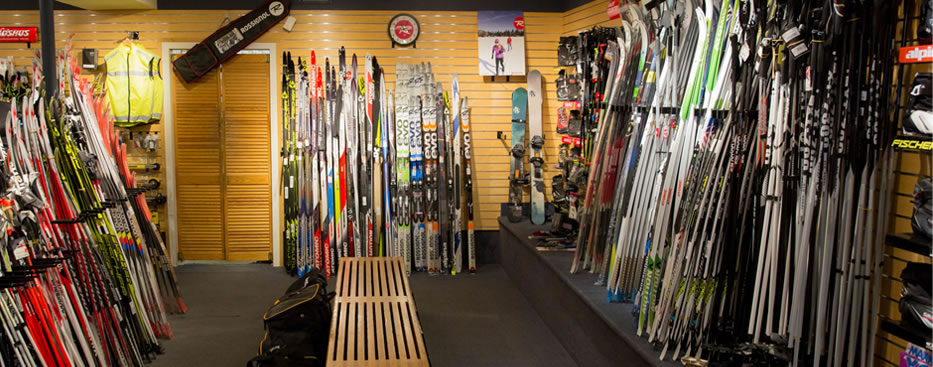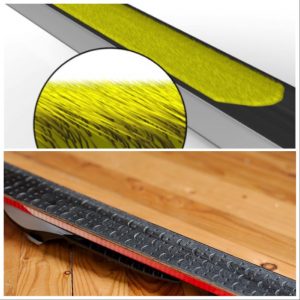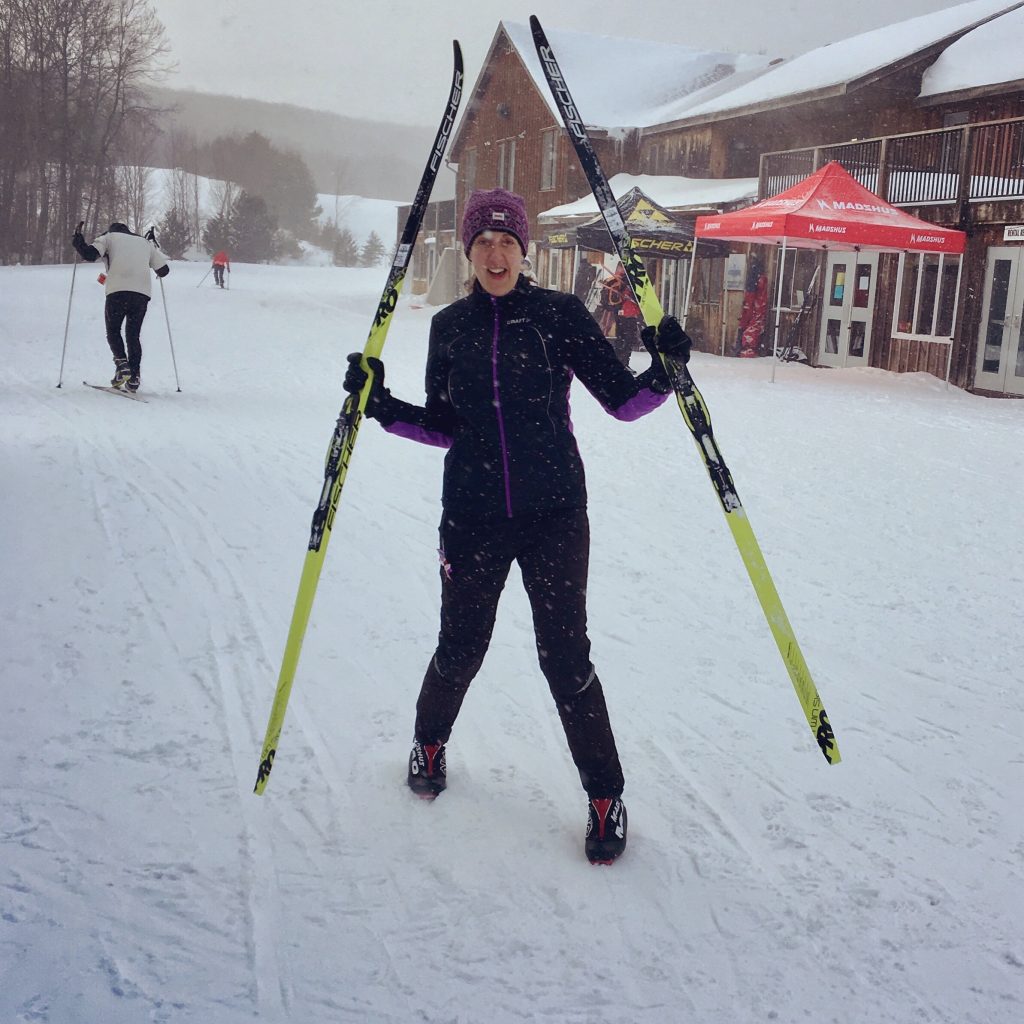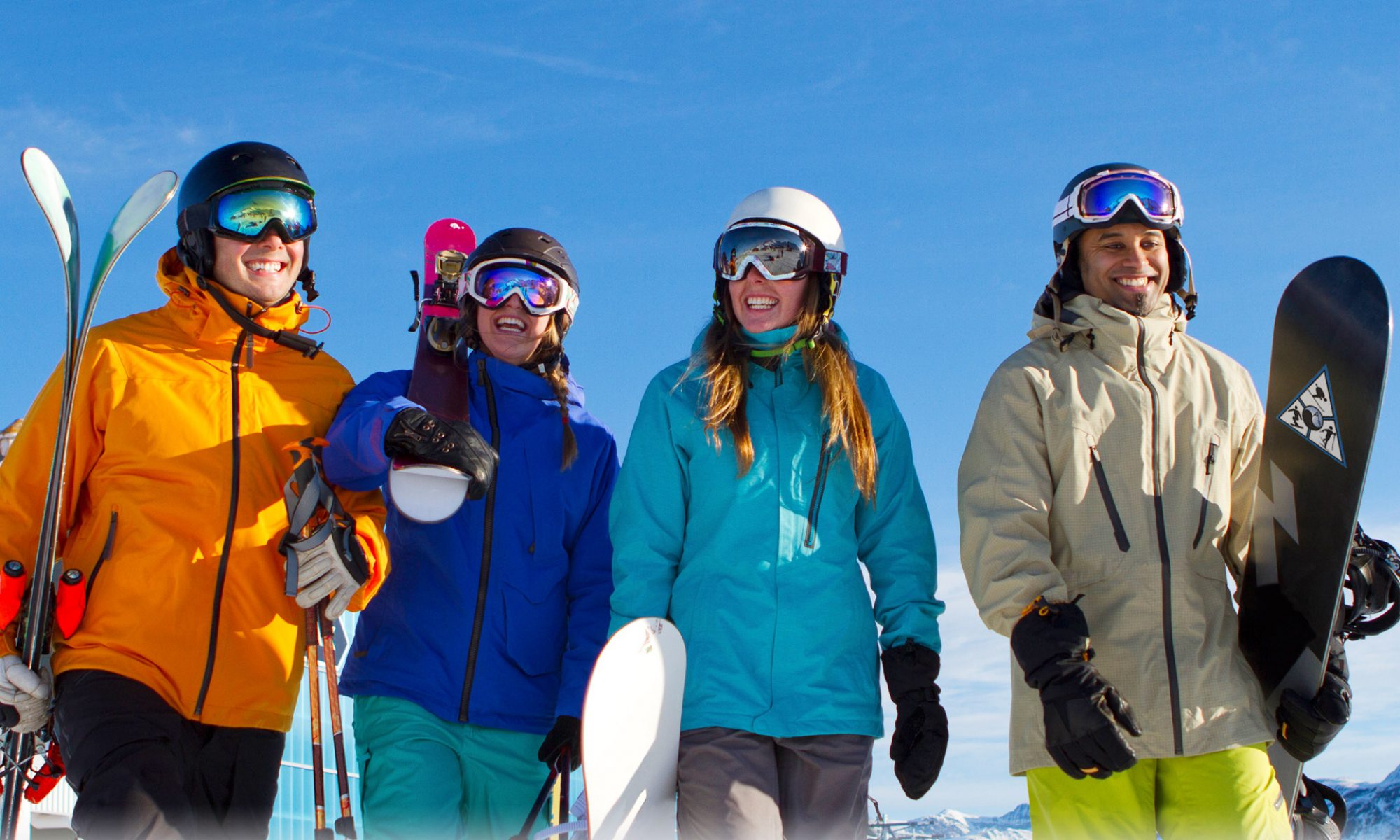
Now that we’re solidly into fall, it’s a good time to talk about what you need to launch your new passion – cross-country skiing and snowshoeing.
If you’re brand new to the sport, we recommend that you rent for the first few times; once you know you love the sport, buy gear. It will save you lots of money in the long run. Once you invest, you’re good to go for years, although you may want to upgrade eventually as ski technology advances and/or your skills outgrow your skis.
As with any sport, you can spend as much as you want. There’s everything from wider, heavier entry level recreation skis at the low end of the price point (about $200) to thin, super light carbon race skis at the top end of the price point (about $1000) and everything in between.
Broadly speaking, there’s two types of skis – those used for skiing on groomed snow (either classic or skate) and those for backcountry touring. While you can use any (classic) skis in the backcountry, if that is your main purpose for skiing, it is best to buy actual backcountry skis. They are wider and have edges, both of which have advantages on ungroomed snow. Since we do not do backcountry skiing, this post will be aimed at skis designed for groomed snow.
There is no one type of skis that are “best”. The skis that are best for you are based on a number of personal factors, including your skill level and the type of skiing you do/want to do as well as your budget. They also – and this is critical – have to be sized correctly for your weight. Both classic and skate skis have flex in them (called the camber). If a ski is too stiff for you, you won’t be able to get enough weight on the ski to push off the snow effectively. If a ski is too soft for your weight, it will drag on the snow and you won’t be able to glide well – and that is the fun part of skiing! This is why I don’t recommend buying a random set of skis off the internet. I prefer to physically go to a store where they can put me on a ski and make sure that it will work for me. Here I will give you a broad overview of skis so you can get a sense of what you are looking for and can be more prepared when you go to a store. This is the most advice I can give – I am not an expert and you should speak to the experts in the store to figure out what is right for you.
First, up, classic skis. Classic skis come in waxable or waxless. Waxable means that you apply wax to the grip zone under your foot, and that wax grips the snow when you put your weight on the ski. This used to be the only option – if you wanted to ski, you had to put on wax! Waxes come in different temperatures and what you use depends on the snow temperature. When conditions are good for waxing (when it’s cold), waxable skis are fast and awesome. But, conditions in Ontario are highly variable with increasing freeze/thaw cycles and more and more ski days hovering around zero. Consequently icy conditions are becoming more common and waxing can be a real challenge.

Luckily there are now a ton of great quality “waxless” skis on the market, which makes skiing a bit more accessible because you don’t have to worry about grip waxing (you can just slap on some liquid glide wax – see our other article about waxing – and go). Waxless skis either have a pattern etched into the grip zone (“scales”) or a strip of mohair (“skins”) that grips the snow. There are advantages and disadvantages to both. Scales are great for beginners because the grip zone is longer and it is easier to achieve grip. That’s important for beginners to have fun – you don’t want to be slipping and sliding all over the place. However, scales do not have great glide – that’s the trade off. I actually feel myself slowing down on the downhills and double poling is more frustrating with my scales. Skins have much better glide as the grip zone (the skin zone) is much shorter than scales and they don’t drag on the snow as much. You will find going downhill and double poling much faster. However, it can be trickier to achieve good grip as they require better technique (you need to be able to balance on one ski and get all your weight on it). They do come with bindings that move forward and back to help with more grip or more glide, but that may not be enough if your technique doesn’t allow you get your weight on the ski when you push. I also find there are certain conditions when skins are challenging to get grip even when you have good technique. When temperatures hover around zero or it’s icy (or I just really want reliable grip and I’m ok with less glide), I still use my scales (because I have that option). There is no right answer for what to get; you need to weigh the pros and cons. If your technique is not great (like most beginners), you could start with scales and upgrade to skins later (so this would mean having to buy a new set of skis in a few years if you wanted). Or, you could start with skins and have your technique “grow into them.” This *may* be frustrating for first little while. Remember, this is just one opinion about skins; others say that skins are supposed to work really well in the conditions I find frustrating with them. Do some research, talk to experts.
Skate skis are a little less complicated to buy as you don’t have a grip zone to worry about; you just need to worry about getting the right ski for your weight so that you can push off laterally and glide effectively. Skate skis are shorter than classic skis and have a bit more of an edge to them (so you can push). The shorter ski gives you better agility than on classic skis.
Once you have your skis, you will need boots and bindings. Boots are important – get a pair that are comfortable, or your feet will be unhappy. Walk around the store and really make sure they will work. Like skis, boots come in a whole range of price points from about $200 for basic boots to a heck of a lot more for lighter race boots. Skate boots have a higher ankle to provide more support as you move laterally. There are what are called “combo” boots that you can use for both classic and skate (some people love them, others don’t…it’s a personal thing. But the combo boots are likely also better now than they used to be). Bindings used to be specific to the boot you bought, as there were two different types of bindings. But all the companies now make compatible bindings, so this is no longer an issue. I prefer manual bindings, but, again, it’s a personal thing.
Poles are the final piece of the puzzle. Skate and classic poles are different lengths. Classic poles should generally come up to the top of your armpit (generally people are going a little higher than they used to) and skate poles to your chin/mouth. A nice feature to have is the hand straps that click out of the pole – so that you don’t need to take them on and off whenever you need to do something with your hands (important stuff – like take photos!). An expert at a store will be able to fit you with the right length pole. If they don’t have your size, it’s no big deal – they can cut down a longer pole. Like skis and boots, the price point varies widely from about $40 for really basic poles to hundreds of dollars for super light, carbon fancy poles.
When you are ready to buy, we recommend visiting stores that specialize in skiing. Hardwood Hills and Highlands Nordic have great pro shops and knowledgeable staff. They have demo days where you can try out skis (usually in January), and they sell packages if you are getting a new set up. Hardwood also has what they call “performance rentals” where you can rent higher end skis, which is a great way to try out better gear. We highly recommend talking to them if you are able to get up there (or we are there). Highlands usually has a 20% off end of season sale and Hardwood this year had a 40% off sale (this isn’t normal, but they normally do have end of season sales). There is no guarantee that at the end of the season they will have your size, though. In the city, Velotique is the best option. MEC sells XC skis, but we recommend buying them there only if you already know what you want to buy. (I find the staff not as knowledgeable as they used to be). It seems like the market squeeze has passed and gear is more readily available.
Everyone has different opinions about gear, and this article is just one. Again, I recommend talking to the experts.
Updated 2023


